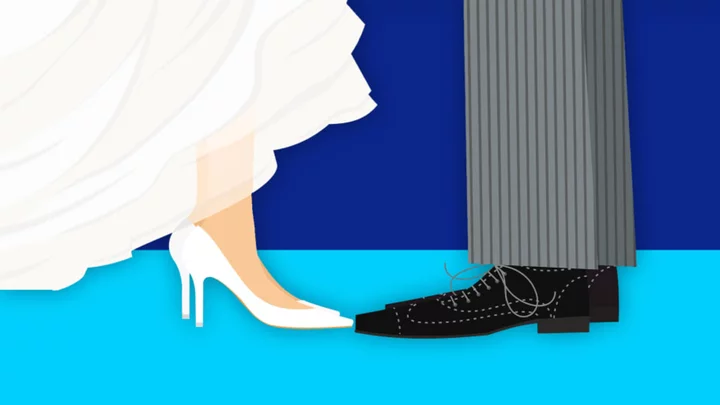Brides have no shortage of traditions to uphold (or skip) on their wedding day, from wearing white to tossing bouquets. But only one directive comes packaged in a tidy couplet:
“Something old, something new,
Something borrowed, something blue.”
The Origins of ‘Something Old, Something New’
Though it’s unclear exactly when or where the rhyme originated, it seems to have cropped up during the Victorian era: The earliest known written reference is from a short story called “Marriage Superstitions, and the Miseries of a Bride Elect,” published in an 1871 issue of The St. James’s Magazine.
“On the wedding day I must ‘wear something new, something borrowed, something blue,’” the narrator says. “The first is easy enough—a matter of course. The second is not difficult, as so many dear devoted friends are so charmed to have a finger in the wedding pie. … For the blue there is only one resource, as one has to be draped in virgin white, and therefore, ‘Honi soi[t] qui mal y pense.’” (That French phrase, roughly meaning “Shame on the person who thinks evil of it,” is the motto of Britain’s Chivalric Order of the Garter. In other words, the bride plans to don a blue garter on her big day.)
Something old is conspicuously missing from that story, but it appears in other mentions from around the same time period, including Beatrice Whitby’s 1890 novel Part of the Property and various newspapers from the early 1880s.
According to an 1898 explanation by folklorist William Crooke, the “something old” and “something blue” were “devices to baffle the Evil Eye,” a curse that could “render [the bride] barren.” The “something borrowed,” per Crooke, “should properly be the undergarment of some woman who has been blessed with children: the clothes communicate fertility to the bride.” These days, brides usually just subscribe to the notion that working all these items into their outfit will bring them good luck in a much more general sense.
Don’t Forget the Sixpence
Though plenty of Victorian sources only note the old, new, borrowed, and blue elements of the poem, others include a fifth line: “and a sixpence in her shoe.” In certain citations, it’s a silver sixpence, and some specify that the coin should be placed in the bride’s left shoe (possibly to neutralize the bad luck long associated with the left foot).
As Tilly Online points out, writers have been mentioning women finding sixpence in their shoes since at least the early 17th century, when British bishop Richard Corbet included this line in his poem “The Fairies’ Farewell”: “Yet who of late for cleanliness/Finds six-pence in her shoe?” The following century, Robert Lloyd alluded to fairies’ dropping sixpence in housewives’ shoes in his poem “To the Moon.”
Finding money in your shoe seems lucky, fairy-deposited or not, and the sixpence wedding tradition is generally believed to bring prosperity to the happy couple. But that’s not the only explanation for the custom.
“If the bride has been courted by other sweethearts than the one she has now definitely chosen, there is a fear lest the discarded suitors should entertain unkindly feelings toward her. To obviate all unpleasant consequences from this, the bride must wear a sixpence in her left shoe until she is ‘kirked,’ say the Scotch,” Kansas’s Iola Register reported in 1885. In Scotland, the newlyweds were said to be “kirked” once they attended church on the first Sunday after their wedding.
Whether they’re trying to summon wealth or ward off jilted beaus, some modern-day brides might have trouble heeding the fifth line of the poem for one simple reason: It’s tough to keep a coin from falling out of an open-toed stiletto.
This article was originally published on www.mentalfloss.com as The Forgotten Fifth Line of the “Something Old, Something New” Bridal Poem.









